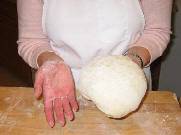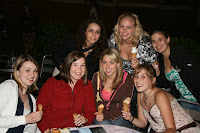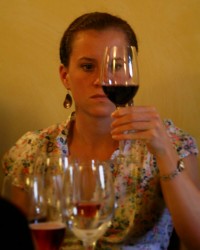

Friday’s Urban Trekking for the students enrolled in Umbra’s Intensive Italian Through Culture Program allowed students to learn about some of the hidden gems Perugia has to offer. The theme of the trek was botteghe artigianali (artisan workshops). Umbria is one is the few regions in Italy that still perserves the ancient tradition of these workshops. The students and guide Valeria Romani spent the morning trekkng along streets many of them had never walked before while stopping off to observe these artisans at work.
The first stop was leather book-binding workshop. Dating back to the middle ages when artisans make booksof wood and bound their covers in leather, the Italian tradition of
covering books still exists today. The handmade books are generally shipped off to clients in Paris and the US and many Italians use these books as wedding albums.
The second stop was Il Pozzo delle Ceramiche Taticchi right up the street from Umbra’s main building. There, artisans hand paint pottery with scenes from Perugia and the Umbrian countryside. Maria Antonietta Tittichi gets her pottery from the well-know pottery mecca of Deruta (just 15 minutes from Perugia) and paints them all by hand in her shop.
The students then set off to the opposite side of Perugia to a hand woven fabric artisan. The Brozetti workshop uses 18th century hand looms (the only in all of Italy who weave fabric by hand) to create beautiful and intricate tablecloths, centerpieces, tassels, etc, out of cotton, linen and even silk. The factory is housed in the church of San Francesco

delle Donne and it truly a magnificent place.
The trek finished at the Augusta Perusia chocolate shop. Students learned about the art of chocolate making and how Augusta Perusia maintains the highest quality of product despite being a very small operation. Students were then treated to some of Perugia’s most famous chocolate made fresh that very morning.
For more information on the stops please visit the following websites
www.ilpozzodelleceramiche.com
www.cioccolatoaugustaperusia.it
In photos: Massimilliano demonstrates the process of decorating the cover of one of the books he made, students observe one of the 18th century looms in action, Giordano explains the chocolate-making process















